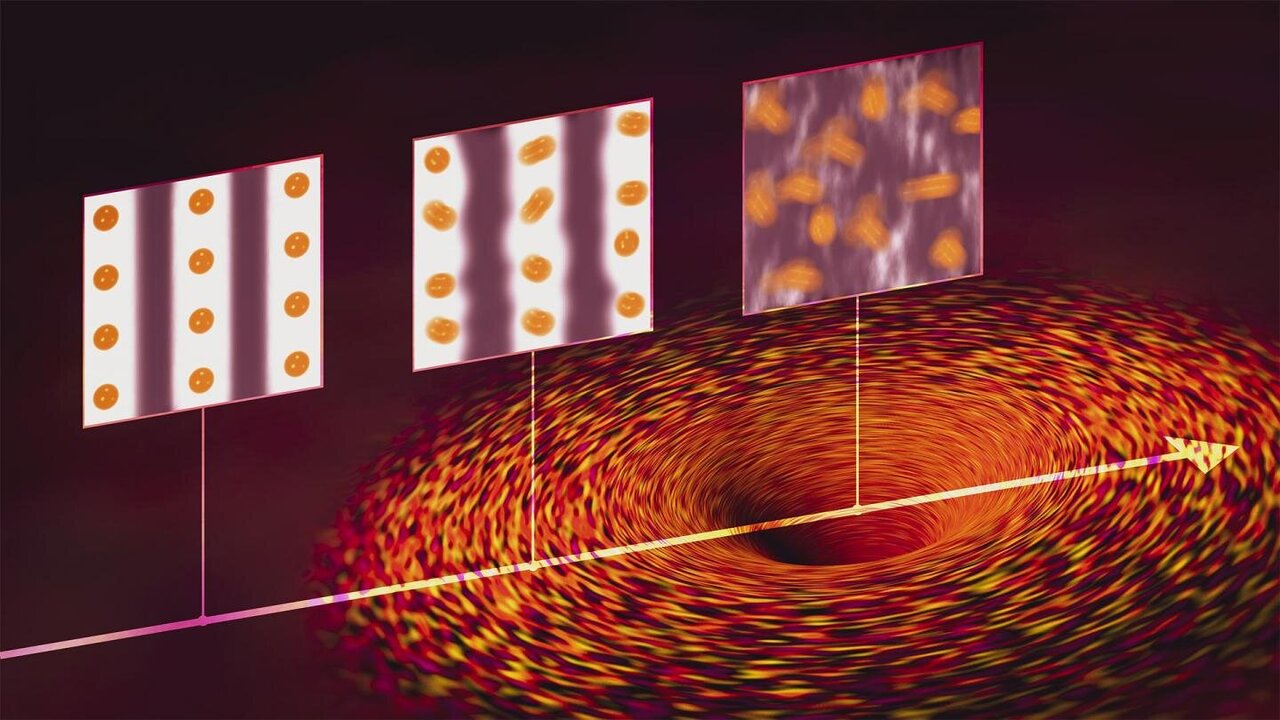The Unexpected Elimination of Quantum Fluctuations Challenges Existing Theories of Superconductivity

January 12, 2024
The contents of this article have undergone rigorous verification per Science X's editorial standards and practices. The highlighted attributes that guarantee its credibility include:
- fact-checking
- review by respected peers
- derived from trusted sources
- proofread for accuracy
The contributor is Tom Garlinghouse, from Princeton University.
An abrupt alteration in quantum behavior has been detected by Princeton physicists while conducting experiments with a superconductive insulator that is only three-atoms-thick.
The study escalates our comprehension of quantum physics in solids and further fuels the exploration of quantum condensed matter physics and superconductivity. The findings have been published in Nature Physics under the title 'Unconventional Superconducting Quantum Criticality in Monolayer WTe2.'
The arrest of quantum mechanical fluctuations, known as the 'death', exhibits a series of distinctive quantum properties and behaviors that seem not to fall under recognized theories, as found by the research team led by Sanfeng Wu, an assistant professor of physics at Princeton University.
These fluctuations are short-lived random alterations in the thermodynamic state of a material that is on the brink of transitioning phases. For example, the melting of ice into water. This experiment from Princeton explored fluctuations that happen in a superconductor at temperatures nearly absolute zero.
"By directly observing quantum fluctuations near the transition, we found strong evidence of a quantum phase transition that violates well-known theoretical models," says Wu. "Once this phenomenon is understood, we expect a revolutionary new theory to unfold."
In the physical universe, phase transitions happen when a material switches from one state to another, such as from solid to liquid or from liquid to gas. Quantum phase transitions also occur, most notably at temperatures near absolute zero (-273.15° Celsius). They involve continuous tweaking of some environmental variables like pressure or magnetic field, sans temperature change.
Superconductors, materials that conduct electricity without resistance, undergoing quantum phase transitions is of prime research interest. Superconductors can speed up information processing and form the basis of powerful magnets applied in healthcare and transport.
Wu said, "The alteration of a superconducting phase to another phase raises fascinating questions, and we have been engrossed in this inquiry surrounding atomically thin, clean, and single crystalline materials."
Superconductivity, a state of zero energy loss and no resistance, is caused by pairs of electrons flowing coherently. Contrarily, in a non-superconducting state, electrons move erratically causing resistance and wasting energy.
Superconductivity was discovered in 1911, yet its function was unclear until quantum mechanics illuminated it in 1956. Only in the past decade or so, researchers have been exploring superconductivity in clean, two-dimensional, atomically thin materials.
N. Phuan Ong, the Eugene Higgins Professor of Physics at Princeton University and the co-author of the paper, shared, "Fluctuations get so powerful in lower dimensions that they obliterate any chance of superconductivity."
Fluctuations primarily terminate two-dimensional superconductivity via the spontaneous appearance of a quantum vortex, or vortices. This vortex is akin to a miniature whirlpool comprising a trapped microscopic stratum of magnetic field within a spiraling electron current. This rapid motion of vortices and anti-vortices annihilates the superconducting state.
Physicists have ascertained that superconductivity does exist in ultra-thin films at a specific critical temperature known as the BKT transition, named after condensed matter physicists Vadim Berezinskii, John Kosterlitz, and David Thouless.
The BKT theory is often acknowledged as a comprehensive explanation of quantum vortices' proliferation in two-dimensional superconductors and the subsequent superconductivity destruction. It is particularly applicable when the superconducting transition is prompted by sample heating.
Presently, how two-dimensional superconductivity can cease sans temperature elevation is a hot research topic in the superconductivity and phase transitions domains. Near absolute zero temperatures, quantum transition is activated by quantum fluctuations, making it different from the BKT transition triggered by temperature.
The scientists embarked on their research with a tungsten ditelluride (WTe2) bulk crystal, regarded as a layered semi-metal. They converted it into a two-dimensional material by ongoing exfoliation, or stripping, until it was reduced to a single atomic layer.
With such thinness, the material behaved as a strong insulator with limited electron motion, hence incapable of conducting electricity. Surprisingly, the material presented several unique quantum behaviors, such as shifting between insulating and superconducting phases. The researchers were able to regulate this shifting by creating a device resembling an 'on and off' switch.
Next, the scientists subjected the material to two key conditions. Starting with cooling the tungsten ditelluride to an extraordinarily low temperature of about 50 milliKelvin (mK).
This temperature, -273.10° Celsius or -459.58° Fahrenheit, where quantum mechanical effects overpower, is incredibly low.
The material was then switched from insulator to superconductor by injecting a few more electrons. A tiny bit of gate voltage was sufficient to reach a superconducting state. This effect, according to Tiancheng Song, the research's lead author and a postdoc in physics, is quite remarkable.
Upon adjusting the electron density through gate voltage, the researchers found that superconductivity properties could be controlled precisely. When the electron density hit a critical point, quantum vortices quickly multiplied and eliminated the superconductivity, causing a quantum phase transition.
To detect such quantum vortices, the team created a minuscule temperature gradient on the sample, making one side of the tungsten ditelluride slightly hotter than the other. 'Vortices are attracted to the cooler edge,' stated Ong. 'In the temperature gradient, all vortexes in the sample drift to the cooler edge, creating a vortex river flowing from the hot to the cool side.'
The vortex flow generates a detectable voltage signal in a superconductor, an effect named after Nobel Laureate physicist Brian Josephson. His theory stipulates that a weak transverse voltage that can be detected by a nano-volt meter is produced whenever a vortex stream crosses a line between two electrical contacts.
'The voltage detection is reversed if you reverse the magnetic field. This confirms the Josephson effect,' Ong added.
Wu added, 'This is a very specific vortex current signature. The direct detection of these moving vortices provides us with a tool to measure quantum fluctuations in the sample, which are typically challenging to achieve.'
After being able to measure these quantum fluctuations, the authors stumbled upon a series of unexpected events. The first was how surprisingly durable vortexes were. The experiment showed that they persist at temperatures and fields higher than expected, even in the resistive phase of the material above the superconducting phase.
The second astonishment was the abrupt disappearance of the vortex signal when the electron density was tuned just below the critical value – the quantum phase transition of the superconducting state. At this critical electron density, which the scientists term the quantum critical point (QCP), symbolizing a zero-temperature point in a phase diagram, the phase transition is powered by quantum fluctuations.
'Below the critical electron density on the non-superconducting side, we expected to see ongoing strong fluctuations similar to those seen well above the BKT transition temperature,' Wu concluded.
'Yet, what we found was that the vortex signals 'suddenly' vanish the moment the critical electron density is crossed. And this was a shock. We can't explain at all this observation—the 'sudden death' of the fluctuations.'
Ong added, 'In other words, we've discovered a new type of quantum critical point, but we don't understand it.'
In the field of condensed matter physics, there are currently two established theories that explain phase transitions of a superconductor, the Ginzburg-Landau theory and the BKT theory. However, the researchers found that neither of these theories explain the observed phenomena.
'We need a new theory to describe what is going on in this case,' said Wu, 'and that's something we hope to address in future works, both theoretically and experimentally.'
Journal information: Nature Physics
Provided by Princeton University




